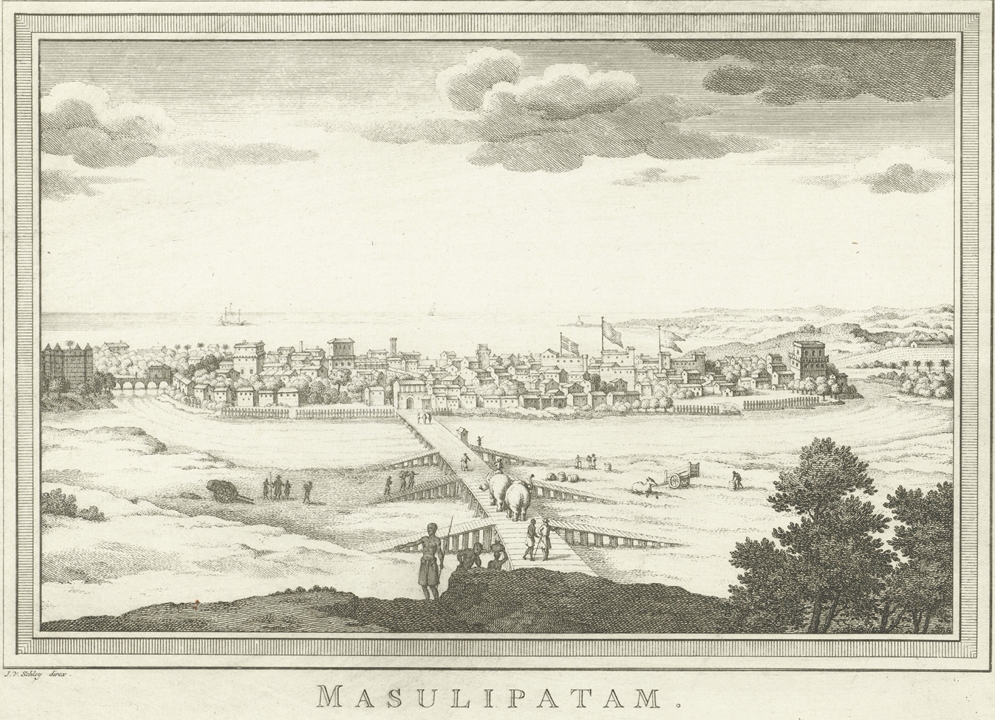Furniture (boxes) from India: A short explanation
By T.M. (Toussaint) Verkoulen
Undoubtedly, the roots of many furnishings lead back to India's woodworking industry, established before the late 15th century European arrival (viz. the Portuguese by Vasco da Gama (1469-1542)). The Portuguese notably expanded this industry in the 16th century to furnish their Asian settlements, like Goa. Goa at the Indian west coast became the capital of the Portuguese 'Estado da India', from 1510 to over 450 years. Subsequently, furniture workshops in Gujarat (northwest) and the Coromandel Coast (southeast) catered to the needs of the English and Dutch settlers along India's shores. These diverse workshops commonly relied on locally available high-quality hardwoods, such as teak and ebony, along with rattan for caned seating rather than fabric. While some pieces mirrored European designs or incorporated Western ornamental styles, local artisans skillfully employed regional carving techniques and embellishments like mother of pearl, ivory, wooden inlay, and decorative veneers. They also infused indigenous motifs and ornamental patterns. This unique tradition, as furniture historian Amin Jaffer notes, was seen as 'exotic' by both its creators and users.
By the 17th century the influence of the Portuguese diminished, and they retained limited territories in Goa, Daman, and Diu. The Dutch arrived for the first time in India in 1605 (Masulipatnam) and focused on trading posts along the Eastern and Western coasts, including areas like Surat, Chinsura, Pulicat, and Nagapattinam. The ‘Geldria Fort’ in Pulicat built in 1613 was their administrative headquarter in India. However, by the late 18th century, their control in India fade away. The English East India Company set also foot on land in Masulipatam in 1611. Strategically located on the Coromandel Coast of India the presence the Bay of Bengal made it an essential port for trade. The English set up bases in Madras (Chennai), Calcutta (Kolkata), and Bombay (Mumbai) in the early 17th century. The British East India Company had a textile factory in Vizagapatam from 1668; by 1768 the British gained total control over Vizagapatam that became a famous furniture industry. They gradually expanded their territories through treaties and strategic alliances, eventually gaining control over vast parts of India by the 19th century. By that time the Dutch East Indian Company had gone bankrupted in 1799, partly due to the fourth Anglo-Dutch war.
From the 18th century on, Indian workshops began to produce more and different types of objects that were easy to transport, for example portable writing desks. Amin Jaffer, who had studied 354 inventories from an early 18th century company trading establishment in Madras, stated that almost all of the consulted inventories contained a writing case or a document box. This means that portable cases and boxes were truly widespread amongst Europeans in Asia. These pieces of furniture played a huge role in the maintenance of company directives towards commercial documentation and therefore also to the early modern overseas trade. Relations of the Indian trading company were often worked out in script through networks of letter writers because travelling merchants only occasionally had direct contact with their associates.
Indian antique boxes can mainly be divided in two categories: inlaid and veneered. The beautiful inlay-work was mainly centered in Vizagapatam, Gujarat and Sindh. They were on high demand transported via coastal towns such as Goa. Until the late 18th and early 19th century, we see the boxes in normal rectangle shape produced with often Portuguese (and Dutch) style influence. This eventually converts to a more conventional English shape. The inlaid boxes are mainly made from rosewood or ebony with ivory directly inlaid into the wood. The second group of Indian boxes were made in sandalwood and veneered in ivory, tortoiseshell, horn or quills. These were also produced in Vizagapatam. Initially in also a rectangular shape, they featured intricate floral motifs on ivory borders, disguising joints and protecting against moisture. In the late 18th century, designs shifted to Neo-Classical styles, adopting linear patterns and deeper lids. Quills and horn were introduced more often as veneers, allowing varied shapes like sarcophagus and architectural forms with diverse cultural motifs. Indian artisans adapted well, crafting baskets and unique shapes, maintaining incised borders, except for "English Cottage" sewing boxes depicting countryside scenes. These changes mirrored shifting tastes and cultural influences over time. 

(View of Masulipatnam, Jacob van der Schley, 1725-1779)
Source: A. Jaffer, “Luxury goods from India, the art of the Indian cabinet-maker”, 2002.
A. Clarke and J. O'Kelly, “Antique boxes in English society 1760 -1900”, 2003.
M. Ogborn, “Indian ink script and print in the making of the English East India Company” 2007.
N. Um, “Chairs, writing tables, and chests: Indian Ocean furniture and the Postures of commercial documentation in coastal Yemen, 1700–40”, 2015. S. Ray, “Indian & Islamic works of art”, 2015.
